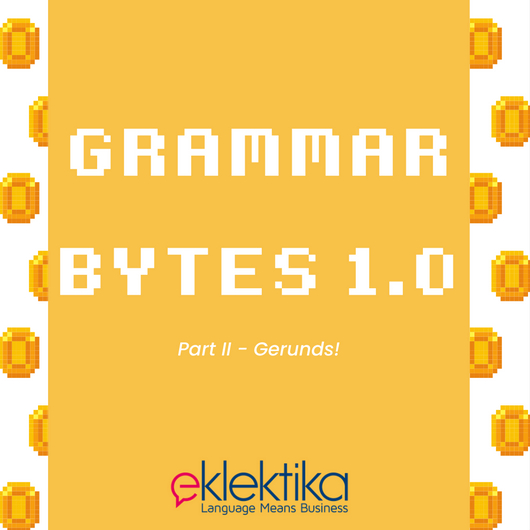
What are they?
Gerunds are words which are formed from verbs but act as nouns. Therefore, gerunds can be subjects, subject complements, direct objects, indirect objects, and objects of prepositions.
What do they look like?
All gerunds without exception are formed from verbs+ing, e.g. read+ing= reading, love+ing= loving. The issue is, gerunds look exactly the same as present participles, so, how to tell them apart?
Recognising gerunds
As mentioned before, gerunds are nouns, therefore in any grammatical structure where the -ing ending words are used instead of nouns, they are gerunds.
As a subject: Reading is fun for all ages. Driving makes me tired.
As a direct object: Josephine enjoys reading. John hates driving.
As a complement: Josephine’s favourite hobby is reading. Carol’s Sunday morning activity is knitting.
In some cases, gerund can take the place of an infinitive verb and it can have two different effects:
- The meaning has little or no difference: I love to read / I love reading
- The meaning is different: I stopped to smoke / I stopped smoking.
The first sentence means the person was walking when they decided to stop and start smoking.
The second sentence means the person broke the habit of smoking and doesn’t smoke anymore.
When the -ing ending word is used after verb to be, then it is present participle.
e.g. She is reading a book. John was driving last night. The meeting is taking place next week.
If you enjoyed this article, please share it with friends and colleagues. Subscribe to our newsletter to always get interesting articles which can help you improve your English!
